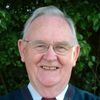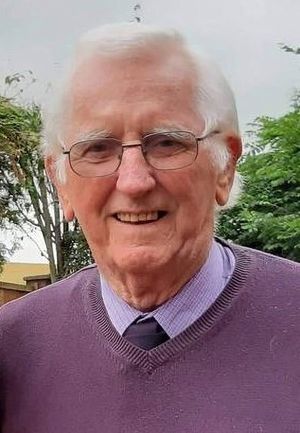What does Osama bin Laden have in common with Jim Jones, David Koresh, Shoko Asahara and Dan Lafferty? To begin with, they are all deeply religious. They are also extremists of one kind or another who have devoted themselves to the zealous pursuit of their religious ideals.
F
urthermore, these people have in common the use of violence in pursuit of their ideals. Osama bin Laden’s use of terrorism against the West needs no elaboration.
Jim Jones? He coerced his followers to commit suicide. Men, women and children, members of Jones’s ‘People’s Temple’ cult, dutifully drank orange squash laced with cyanide on the instruction of their leader.
David Koresh, fascinated by firearms, survivalist gear and the end of the world, died in April 1993 with at least 85 members of his ‘Branch Davidian’ cult in Waco, Texas, in a violent encounter with US agents and military personnel.
Shoko Asahara was the leader of the Japanese cult ‘Aum Shinrikyo’. In 1995 his cult members were responsible for killing and injuring commuters when they carried out a deadly attack in the Tokyo subways using sarin nerve gas.
Dan Lafferty
What about Dan Lafferty? He is an American Mormon Fundamentalist, a polygamist, who also uses violence. First I must explain the background before detailing Lafferty’s story in the next article.
The story is really in two parts — polygamy and violence. Lafferty’s pilgrimage is a sad story of ignoring the Bible and becoming fascinated with the ideas of early Mormon books. This first article touches only on the aspect of polygamy.
I have just been stimulated through reading about polygamy and violence in Jon Krakauer’s book entitled Under the banner of heaven: a story of violent faith (Macmillan, London 2003/Doubleday, New York, p.372).
The author’s literary skills and reputation are widely recognised. In this book he provides a ‘riveting account of Taliban-like theocracies in the American heartland, controlled by renegade Mormon prophets’ (inside cover).
Total control
It is an interesting book, providing valuable insights into isolated ‘Mormon’ communities in Canada, Mexico and the American West. There are about 40,000 Mormon ‘Fundamentalists’ living in these communities.
Polygamy is practised. In fact, one of the leaders took as many as 75 ‘plural wives’. Some of these women were taken as brides when they were in their early or mid-teens and the man was over eighty years of age!
These Mormons are extremely critical of the main Mormon movement, especially in departing from one of its foundational distinctives, namely, polygamy. They ignore the Mormon leadership in Salt Lake City and often run foul of the civil authorities as well.
They feel accountable to God alone — but their prophets exercise a rigid and total control over the lives of members. On a daily basis, these people anticipate a cataclysmic purging of the world by fire, in which only their own obedient members will be spared.
Disowned
The mainstream Mormon Latter Day Saints church disowns these people as extremists and fanatics. ‘They have no connection with us whatever’, insisted an LDS leader recently. ‘They don’t belong to the church. There are actually no Mormon Fundamentalists’ (p.4).
But that is a matter of opinion. Think, for example, of what these Fundamentalists (abbreviated to MF) share in common with the main Mormon group (abbreviated to LDS).
For one thing, they both accept the Book of Mormon as their sacred, authoritative text. Furthermore, they both acknowledge Joseph Smith as their founder (1830). For them Smith had a crucial, privileged role in God’s universal redemptive purpose. He is regarded as a prophet with a status comparable to that of Isaiah or Moses.
But these two groups also share the belief that God has favoured them above all other people; they alone are the Lord’s chosen people.
Polygamy
Where, however, do they differ? One major area of conflict concerns polygamy. MF believe it is the religious duty of saints to take multiple wives.
Did Joseph Smith practise polygamy? Yes. He married between thirty-three and forty-eight women! One of the wives he married was only fourteen years old; she was informed by Smith that God had commanded her to marry him or face the prospect of eternal damnation.
There is no doubt about it — Joseph Smith practised, and committed his movement to, polygamy. And this practice is written into one of their three primary scriptural texts called The doctrine of the covenants (section 132); the other two primary texts are the Book of Mormon and The pearl of great price.
Section 132 contains no ambiguities concerning polygamy, for Smith describes it as ‘the most holy and important doctrine ever revealed to man on earth’. To achieve the ‘fulness of exaltation’ after death a man requires a minimum of three wives.
Those who disobey this doctrine, according to Smith in this text, will not ‘be permitted to enter into my glory’ — they will be damned.
Foundation doctrine
The message could not be clearer and it was a foundational doctrine for Joseph Smith and for all early Mormons. Smith’s successor, Brigham Young, also continued and encouraged the practice of polygamy.
By the mid-nineteenth century, there were considerable political, social and financial pressures imposed on the Mormon movement in an attempt to eradicate polygamy as well as slavery from America.
LDS had no choice but to abandon the practice, but groups of Mormons were encouraged to disperse and establish colonies in Mexico and Canada — even in remote areas of the United States — where they could continue the practise.
MF complains bitterly over the abandoning of polygamy by LDS; for them it represented a compromise of major proportions concerning one of the most prominent theological teachings of the movement.
Spiritual marriage?
In the 1890s, therefore, some Mormons did spread out to Canada, Mexico and the more remote areas of America in order, primarily, to practise polygamy.
Communities were established in remote areas like Colorado City in the Arizona Strip and Bountiful Settlement 900 miles to the north, just over the Canadian border. Here they continue to practise polygamy, but to keep within American law, there is only one ‘legal’ wife — although others are ‘spiritually married’ to the same man.
This often means that the ‘spiritual’ wives are single mothers and qualify for extensive financial help from the State.
However, in Colorado City, for example, men who ‘marry’ young teenagers are seen by the State as being guilty of abuse and rape; they are often rightly described as paedophiles (Krakauer pp.10-13).
There are major problems, nevertheless, in applying the law there and prosecuting offenders. Jon Krakauer (p.24), at the time of writing, states that even the city police chief was polygamous and claimed liberty to practise his religion at home as he pleased.
Tragedy
Now I can introduce you to Dan Lafferty, who was brought up by zealous LDS parents in Utah. His father was a strict disciplinarian.
In his twenties, Dan married a divorced lady from Scotland and settled in his home area. Four children were born to them before Dan became interested in polygamy and researched it extensively.
He stumbled across an 1842 LDS booklet entitled The Peace Maker, and he was convinced by its defence of teachings such as polygamy. Dan believed also that Joseph Smith had actually authored it. Quite soon he engaged in ‘spiritual wifery’ and treated his wife and children harshly.
While it is particularly Dan’s violence, alongside his polygamy, which brought him notoriety in 1984, we must pause here before continuing further.
Sadly, his story illustrates the blindness and sinfulness of humans outside of Christ and the tragedy of not living under the authority and power of the only written Word of God, the Bible.
Polygamy was practised, and wrongly so, in Old Testament times, but the Scripture informs us repeatedly of the major relational and spiritual problems it caused (e.g. Genesis 35:22; 37:18-28; 1 Samuel 1:6-7; 2 Samuel 13:1-24; 15:1ff; 1 Kings 11:1-12).
It is from the creation ordinance in Genesis 2:24 that the Lord Jesus underlines monogamy (one man, one woman) as the divinely ordained nature of marriage (Matthew 19:4-6).
To ignore this divine pattern, and the Word of God itself, is utter foolishness. Such people are ‘always learning and never able to come to the knowledge of the truth…’ (2 Timothy 3:7).
For it is in Christ, and Christ alone, that ‘all the treasures of wisdom and knowledge’ are hidden (Colossians 2:3).














